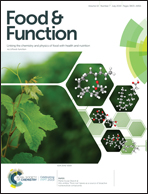Signaling pathways involved in p38-ERK and inflammatory factors mediated the anti-fibrosis effect of AD-2 on thioacetamide-induced liver injury in mice
Abstract
Ginseng is a type of medicinal and edible homologous plant that is very common in medicine, food and even cosmetics. Ginsenosides are the main active constituents of ginseng, which has many pharmacological activities. AD-2 is a type of ginsenoside extracted from ginseng and prepared in large quantities in our laboratory. However, the anti-fibrosis effects and mechanism of ginsenosides are rarely reported. In this study, the anti-fibrosis pharmacodynamics of AD-2 were evaluated. The results revealed that AD-2 could reduce the expression of collagen I, TIMP-1 and MMP-13, inhibit the deposition of extracellular matrix, and play an role in anti-hepatic fibrosis. The mechanism and related pathways of AD-2 against liver fibrosis have also been studied. Inflammatory factors (including TNF-α, IL-1β, caspase-1 and IL-6) associated with hepatic fibrosis, and the p-JNK and the p38-ERK pathways, have been shown to be associated with the anti-fibrotic effect of AD-2. In conclusion, our study reveals that AD-2, as a small-molecule, targeted drug for improving liver function, needs further study.



 Please wait while we load your content...
Please wait while we load your content...